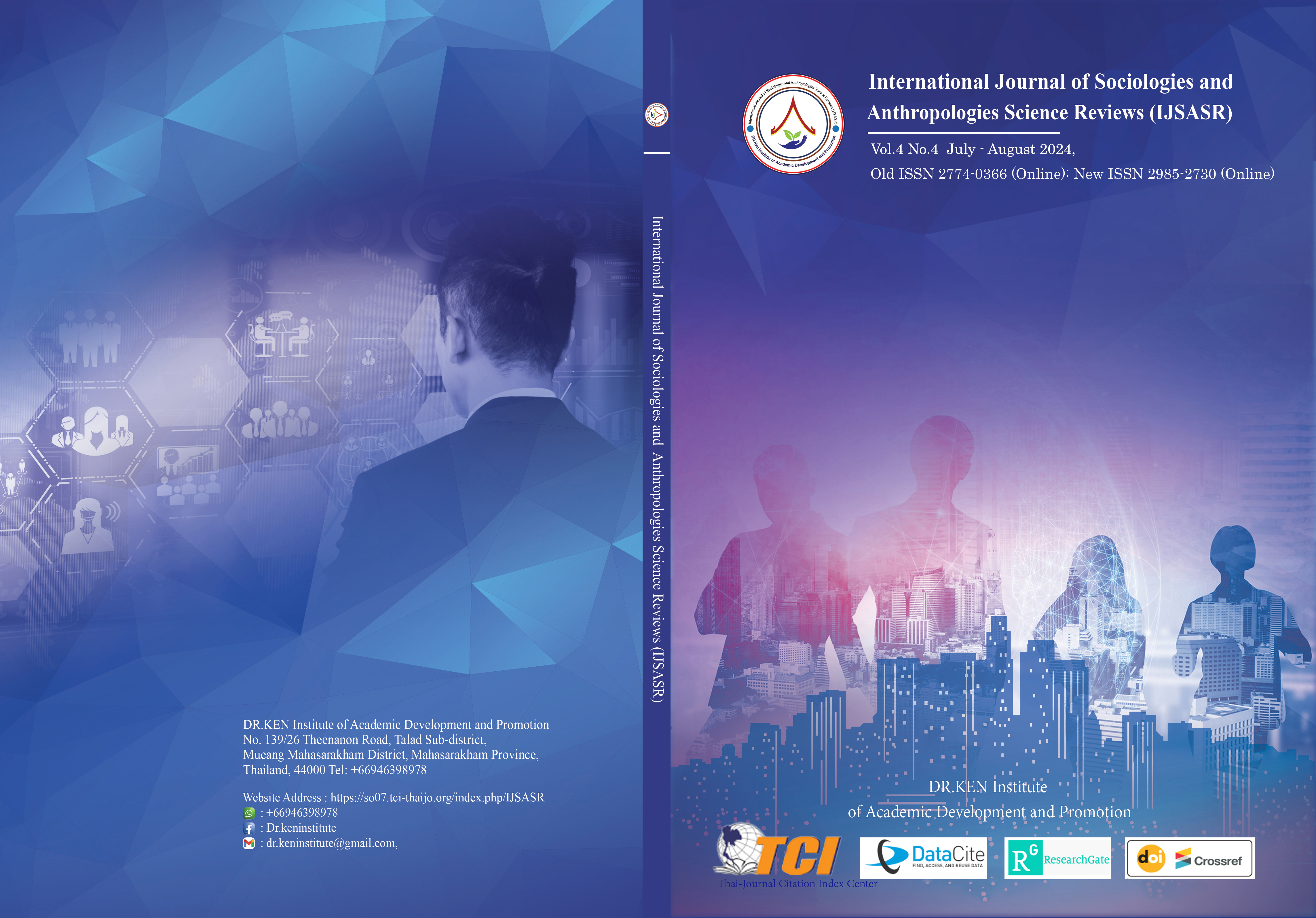Developing on Academic Achievement in Chinese Modern History Course Using Integrated Learning Activities for First-Year College Students
Main Article Content
Abstract
Background and Aims: The purposes of this study were 1) To develop integrated learning activities in a modern Chinese history course with an efficiency the 75/75 and 2) To compare learning achievement in a modern Chinese history course with pre-test and post-test scores of students who learned using the integrated learning activities of students and 3) To study the students’ satisfaction toward the integrated learning activities in a modern Chinese history course.
Materials and Methods: The sample group is 40 students in the first semester of 2023. Research tools are used in lesson plans, learning achievement tests, and satisfaction questionnaires. In data analysis including percentages, means, standard deviations, and paired t-tests
Results: The results of the research found that: The Results of this study shows differences in the development of academic achievement. After using integrated learning activities in the modern Chinese history curriculum in studying modern Chinese history courses which the researcher discussed the results of data analysis in the research are as follows: 1) The Integrated learning activities have an efficiency value of 78.80/76.20, which is as specified by the researcher (2) The Integrated Learning activities that was a significantly higher learning achievement after studying than before studying at the .05 level. And (3) Students who studied using Integrated learning activities overall satisfaction was at a high level.
Conclusion: The epidemic of opium has brought grave disasters to the Chinese nation. At the end of 1838, Emperor Daoguang sent Lin Zexu, who was a strong advocate of smoking prohibition, as imperial minister and lived in Guangdong to suppress opium.
Article Details

This work is licensed under a Creative Commons Attribution-NonCommercial-NoDerivatives 4.0 International License.
Copyright on any article in the International Journal of Sociologies and Anthropologies Science Reviews is retained by the author(s) under the under the Creative Commons Attribution-NonCommercial-NoDerivatives 4.0 International License. Permission to use text, content, images, etc. of publication. Any user to read, download, copy, distribute, print, search, or link to the full texts of articles, crawl them for indexing, pass them as data to software, or use them for any other lawful purpose. But do not use it for commercial use or with the intent to benefit any business.

References
Asawasowan, J., Makkasaman, W., Naowyenphon, P., & Kanchanachatri, S. (2013). The Development of an Integrated Instructional Model with Provision of Experience Based on the Constructivist Concepts to Develop Analytical Thinking and Learning Achievement of Prathom Suksa 3 Students. Narathiwat Rajanagarindra University Journal, 5 (3), 81-95.
Beane, J. (1991). The Middle School: The Natural Home of Integrated Curriculum. Educational Leadership, 49, 9-13.https://eric.ed.gov/?id=EJ432772
Bonk, C.J., & Graham, C.R. (2012). The Handbook of Blended Learning: Global Perspectives, Local Designs. John Wiley & Sons Inc.
Devries, R., & Kohlberg, L. (1990). Constructivist Early Education: Overview and comparison with other programs. Washington, D.C: National Association for the Education of Young Children
Feng, X., & Wang, R. (2018), Wu Yijun. A review of the research status of blended teaching at home and abroad——Based on the analysis framework of blended teaching. Distance Education Journal, 36(3), 13-24.
Gonzalez, J. (2012). Promoting Higher Order Thinking in Mathematics. Master’s Thesis. Kean University.
Lardizabal, A.S. (1970). Methods and Principles of Teaching. Quezon City: A Lemer – Phoenix.
Li, K., & Zhao, J. (2004). The principle and application mode of blended learning. Electronic Education Research, 26 (7), 1-6.
Luo, W. (2020). Exploring Effective Ways to Cultivate Students' Digital Learning and Innovation Ability. China Audio-Technology Education, 32(11), 42-43.
Phongsapich, C., Suksathan, N., & Mueankid, W. (2010). Students' satisfaction toward integration learning method: A case study of human relations subject. King Mongkut's University of Technology North Bangkok Academic Journal. 18 (2), 63-69.
Rajendran, N.S. (2008). Teaching & acquiring higher-order thinking skills: Theory & practice. Universiti Pendidikan Sultan Idris.
Saengkhanong, N. (2021). A development of the instructional model integrated learning for air conditioning system. The 44th Electrical Engineering Conference (EECON44) 17-19 November 2021 at The Impress Nan Hotel, Mueang Nan District, Nan Province. 680-683
Saowmuang, S. (2015). The Model of Learning Affecting the Learning Achievement of the Five Standard Criteria of Master of Business Administration’s Students, King Mongkut's Institute of Technology Lad Krabang, Prince of Chumphon Campus. Eastern Asia University Academic Journal Social Sciences and Humanities, 5 (3), 305-315.
Srisa-ad, B. (2010). Preliminary research. 8th printing. Bangkok: Sureewiyasan.
Thongprasit, W. (2020). The model of school management for work-integrated learning to promote the quality of learners by the cooperative context of Bangkaewfa Industrial and Community Education College (Luang Phor Pern Upatham). KMUTNB Industrial Education Journal. 11 (2), 195-210.
Tisana Khaemmanee, T. (2011). Teaching science: knowledge for organizing an effective learning process. 14th edition. Bangkok: Dan Suttha Printing.
Worakam, P. (2021). Educational research. 12th edition. Maha Sarakham: Taksila Printing.
Yang, Q. (2003). Survey on the "satisfaction" of college students in Chongqing. Exploration, 53 (1), 92-94.
Yu, S., Lu, Q., & Chen, S. (2005). Blended teaching under the network environment - a new teaching model. Chinese University Teaching, 25 (10), 50-56.






